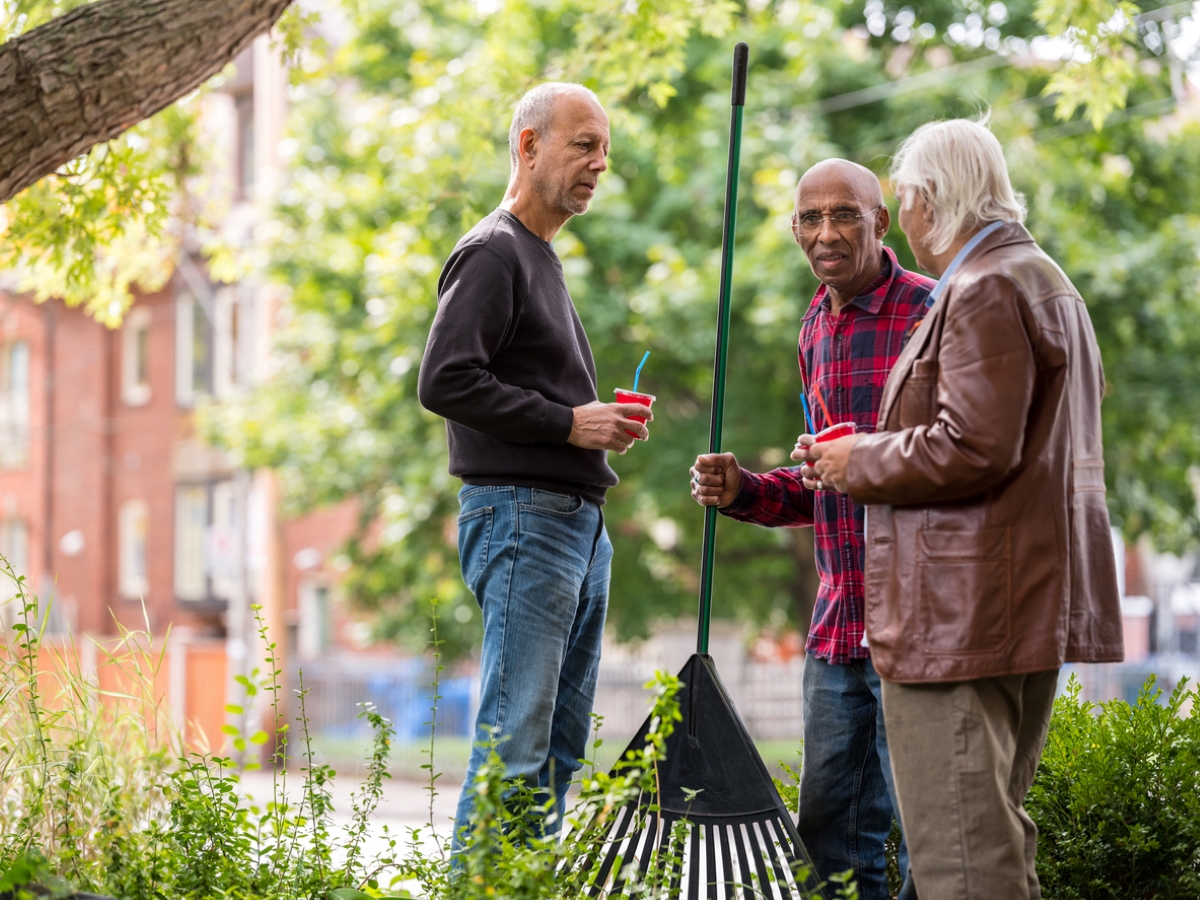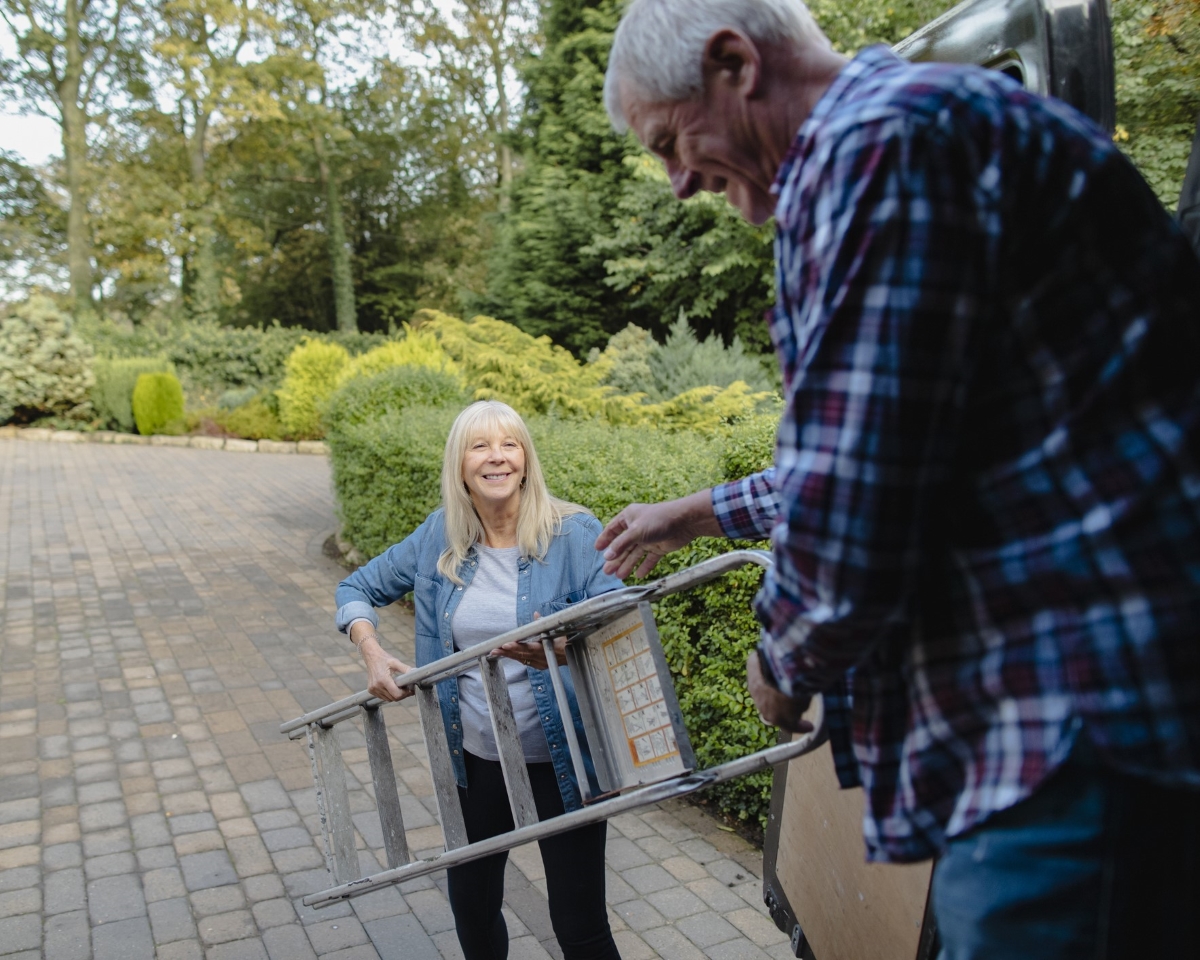

We may earn revenue from the products available on this page and participate in affiliate programs. Learn More ›
You need a snowblower but just don’t have it in the budget right now, so you borrow one from your neighbor. He needs a wet tile saw for a kitchen project, but can’t justify buying one so you let him borrow yours. Soon, you and many of your neighbors are borrowing tools from one another. Sounds ideal, right?
Neighborhood tool shares and swaps are an economical and planet-friendly way to get the tools you need for projects around the house. A neighborhood tool share includes getting together with trusted neighbors to see who has various yard and garden, woodworking and other tools they are willing to lend to neighbors. This can cut down on the money you spend on tools you may only use occasionally, or help when the budget is tight.
If starting a neighborhood tool share sounds like something you want to try where you live, we have some tips for starting one of your own.
1. Talk to Neighbors

Clay Williams of Saint Paul, Minnesota, is part of an informal neighborhood tool share that all started about 15 years ago after a snowfall when his next-door neighbor offered to lend him his snowblower. It has since grown to about five households.
To get started, talk to neighbors to see if they’d be interested in starting a tool share program. Ask about what tools they’d be willing to loan out and create a master list of who has what. Also, you may want to inquire about specific DIY skills neighbors may have. For instance, if you have a woodworker in your group, they may be willing to help with certain projects.
RELATED: 12 Things You Don’t Realize Are Annoying Your Neighbors
2. Keep Track of Tools
Williams notes his neighborhood tool share is done on the honor system and people know what each neighbor has and is willing to loan. When they need a certain tool, they text one another to see if the tool is available.
However, you can use other resources, such as a Google Sheet to track tools, when they were loaned out and to whom, and when they were returned. There are also apps and websites, such as My Turn, which allows you to keep and track a database of equipment.
RELATED: Building the Essential Toolbox: 20 Tools You Can’t DIY Without
3. Make Some Rules
You’ll need to decide with participating neighbors where the tools will be kept and how the loaning process will work. Will the tools all be kept in one location, such as space in one person’s garage? Or will each neighbor keep his or her tools with them? Next, how long can each tool be kept? A few days, a week, more? Depending on the size of your tool inventory and how many neighbors take part, you may want to set up some time guidelines so nobody keeps a certain tool longer than needed when someone else may be waiting in line. You’ll also need to decide what happens when a tool is damaged or breaks. Who will be responsible for replacement?
RELATED: Whose Problem Is It, Anyway? Property Line Landscaping Disputes, Solved
4. Get Ready to Lend

If you have a popular tool, be prepared that the item may be in high demand during certain times of the year.
“My most loaned are the 30-foot extension ladder, weed wrench, tools for planting bulbs, and the bow saw for tree trimming,” Williams said. On the flip side, he tends to borrow a snowblower and a landscaping rake the most, along with having one of his neighbors help cut occasional items on his table saw.
Also, depending on the tool and the user’s level of experience, you may have to offer a quick demonstration on how the tool should be used, along with any tips or tricks.
RELATED: The Best Tool Box Organizers of 2025 for Garage and Workshop Sanity, Tested
5. Reap the Benefits
“It’s kind of a bonding experience for new neighbors,” Williams said of his neighborhood tool share. “I think the biggest benefactors have been a couple of new additions to the block who are first-time homeowners. They tend to be a bit shy of having a complete tool kit, so they are in need of advice and tools.” He added that one couple are recent transplants from California and were apartment dwellers previously, so they are acclimating to Minnesota weather and need tips for getting their home ready for winter as new homeowners.
“There’s no downside from my perspective,” Williams said. “This is an organic thing that has zero formalities. It’s just folks being neighborly.”
RELATED: The Best Hand Tools, Tested and Reviewed
Want to Swap Tools for Good?

If starting a neighborhood tool share isn’t your style, but you have some tools you no longer need or some duplicates, try setting up a neighborhood tool swap. This is a great way to not only get rid of items but also find items you may need.
Reach out to neighbors to see if they have any tools that are still in good shape but they no longer use. Pick a day and time to host a tool swap. If you have some gardening tools you no longer need, set those out for a neighbor who could get some use out of them. Bring what you can and take what you need.
